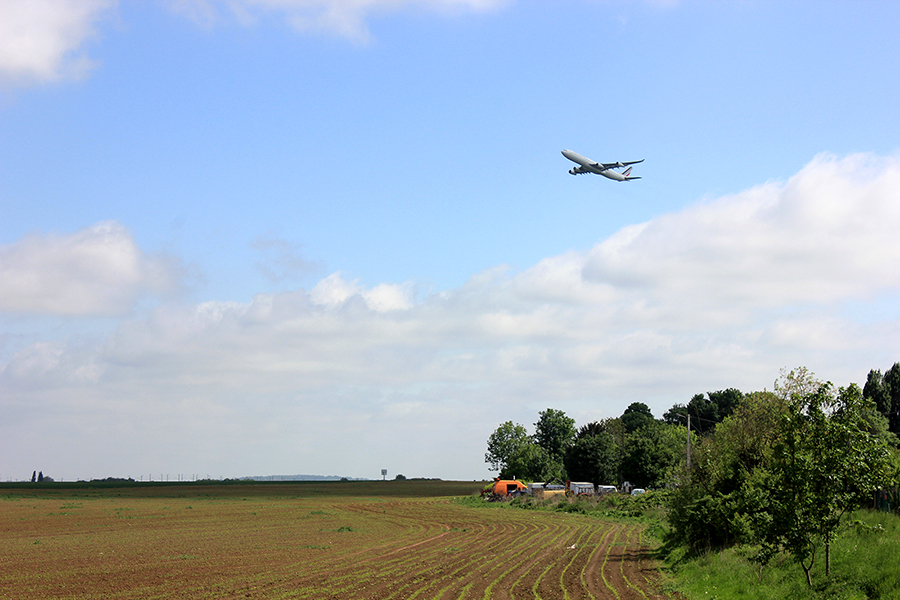
In contemporary airports, traditional notions of infrastructure are questioned. As gateways to metropolitan areas, airports attract new functions and become strategic territories. Eirini Kasioumi’s SNF-funded PhD research Evolving planning strategies in urban airport areas. Case study: the Paris airports explores how changing perceptions of the airport can create tensions or foster synergies.
Paris boasts Europe’s second largest airport, Paris-Charles de Gaulle, that together with Paris-Orly also constitutes one of the continent’s largest airport systems, second only to London. Maintaining this competitive advantage has been a key stake in metropolitan plans throughout the last 50 years.
In this quest, two rationales have often clashed: one, focusing on the infrastructural vocation of the airports, is concerned with their good functioning and unhindered growth, thus prioritizing the preservation of land reserves, on and around them, as well as the development of good transport connections to the city. The other, fuelled by economic development impulses, is directed at maximizing and distributing the economic benefits either directly or indirectly linked to the airport. Both approaches have been encapsulated in planning rationales, as well as specific project discourses, often in contradictory ways.
Moving Towards Economic Development Rationales and Strategic Discourses
Between the 1970s and the wake of the 21st century, Paris, not unlike other major Western cities, undergoes a series of mutations: globalization and urban competition, spatial polarization, de facto emergence of strategic territories, and a shift to project-based urbanism. In this context, the economic development approach to the airport gains ground over the infrastructural approach, coinciding with the multiplication of involved actors and the emergence of strategic discourses. This becomes most obvious in the case of Paris-Charles de Gaulle, an airport planned in the 1960s in a predominantly agricultural, sparsely populated area, which by the end of the 1980s begins to be considered in a new light. Concurrently, planning practice becomes more tuned to accommodating various interests – the airport operator, the state, regional and local administration, and big economic players – rather than enforcing categorical spatial priorities.
This PhD research, culminating in 2016-2017 in a series of presentations in colloquia and international conferences, contextualizes the transformation of airports from infrastructural to strategic regional nodes within metropolitan urban planning. The case of Paris, a metropolis shaped by both a muscular planning tradition and an engineering culture, offers an ideal case for this analysis.
Eirini Kasioumi is a PhD candidate at the Chair of Architecture and Urban Design, Prof. Christiaanse, since 2012. She studies the integration of airports in metropolitan areas as part of the Airports and Cities platform. Apart from her doctoral work, she is involved in the book «Noise Landscape: A spatial Exploration of Airports and Cities», to be published in 2017. Other areas of research and teaching include urban design theory, infrastructures and urban strategies, and the design and politics of large-scale projects.
Recent publications:
Kasioumi, Eirini (2015): Emerging planning approaches in airport areas: the case of Paris-Charles de Gaulle (CDG). In: Regional Studies, Regional Science, 2:1. S.407–413. DOI. 10.1080/21681376.2015.1064012. More
Kasouimi, Eirini (2015): Urban Design Models for Urban Megaprojects in a Global World. In: Christiaanse, Kees et al. (Hrsg.): Global Schindler Award 2015 Shenzhen Essays. Schindler Group and ETH Zürich. S.46-55.
Image: © Eirini Kasioumi (2013)